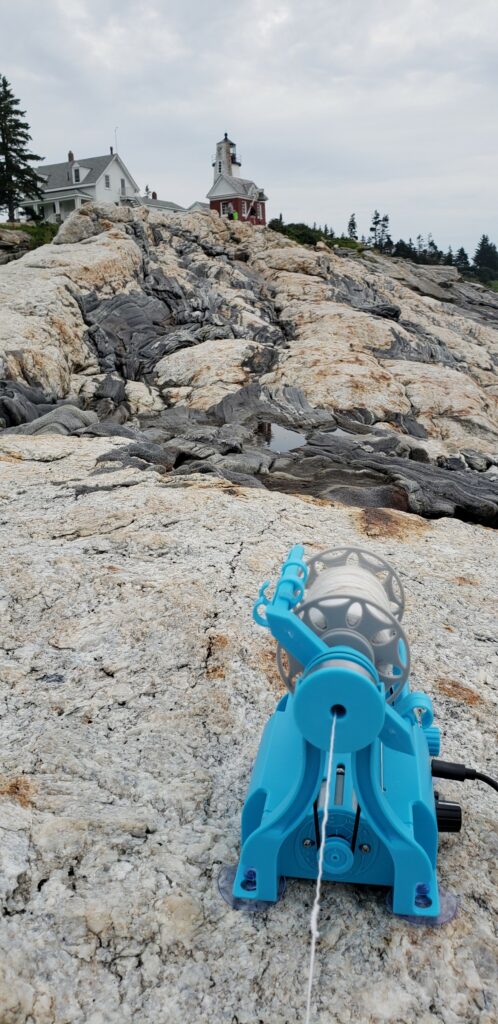
The fruits of my handspun labor! Very surprising and exciting!

Spinning cashmere in Maine.
Desirable Breeds
Each breed of sheep produces its own characteristics of fleece. The strength and style of each fleece can change from year to year so you should felt test each time you start with a new fleece. The Targhee or Columbia wool has a very small wave or crimp and is considered fine wool that felts quickly, as compared to a Montadale or Suffolk wool that has a crimp further apart and is considered to be a medium fiber that takes longer to felt.
Washing The Fiber
This is the processes by which the dirt and grease are removed for the fibers. When washing a new fleece it is best to start with a sample of one pound or two. The object of washing is to get the fiber completely clean, while avoiding the natural tendency to felt. Steps in washing your fiber are as follows:
Make sure the fleece has been well skirted, removing as many second cuts, foreign matter and manure spots as possible.
Fill your tub with water that is 140 degrees.
The first water should have no soap added. Let the fiber soak for about 20 minutes.
Gently drain the water and refill the tub with the second water, moving the fiber as little as possible. Do not allow the refill water to run on the fibers directly as this may cause felting in some fibers. Fill the tub with water that is about 140 degrees and add soap to the water.
Change the water again after a 20 minute soak, and once again add soap to this water.
The next soak is a water only rinse.
After a 20 minute soak, change the water and add soap if needed. The rest of the water changes should be just below 140 degrees.
Keep changing the water until clear (usually about 3-4 times).
After a rinse of clean water I usually add a small bit of vinegar to the water as this helps to restore the PH balance.
When the wool has been well rinsed, you may spin the washed fiber in a washing machine, but be sure to turn off the water source to the washer to avoid felting the fibers.
Remember that it takes 15-16 times the amount of detergent to get a Merino fleece clean, because it has a higher amount of Lanolin. A Karakul fleece has only 2.3%, Lincoln 6.6%, Leicester 9.8%, Rambouillet 14-16% grease.
Be sure not to agitate the fiber when changing the water or suddenly change the temperature of the water as this will causes the fiber to felt.
Felting The Fiber
In the felting process the scales on the wool fibers are intentionally matted together to form a tight sheet of material. Different breeds of sheep have different felting properties and within the breed there can be some sheep that felt well and some that do not. A quick test for felting ability’s is, take a couple of pencil locks of wool in your hand, add some moisture and rub the locks together in the palm of your hand. A good felting fleece will react and felt quickly.
I used a Mini Mill felting machine and laid down one layer North to South and the next layer East to west. I then sprinkled the two layers with 1 gallon on water to which about 2 tablespoons of ‘Dawn’ dishwasher soap has been added.
Felt one side for about 10 minutes and after flipping over the felt pad, felt the other side for another 10 minutes. Rinse in clean water in the front load washer two times on a rinse only cycle.
I look forward to helping you with you fiber needs!
– Jayne
